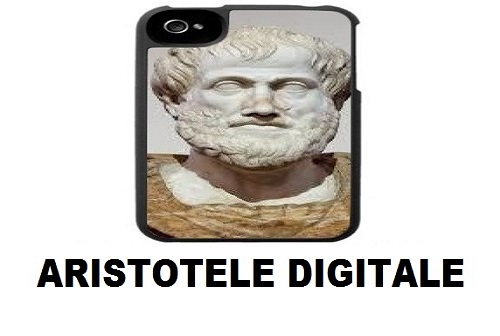In this moment I cannot deal with anything other than what is put on the corner or, if we want, cornered. On the other hand, isn’t the corner the place of conflict? And don’t these gleanings of mine try to catch the lumps of a transformation, which I consider radical, between the industrial and the digital production? So, corners from which people try to get out, conflicts people want to overcome. This transformation should make us think that, perhaps, when a mode of production changes everything changes with it, and that this change has already been happening for some time, and that we all pretend not to know that what “resists” is always worse than what is already happened. Think about it, please.
As improbable as it may seem, the first scenario (i.e. the order of meaning), which changes, is what the ancients called cosmogony and which we have beautifully (sic! Beautifully!), idolizing the beauty, removed. We removed it because we translated it into “literature”, that is, the aesthetics of narrating, when narrating has in itself the ethics of social relations and therefore also of politics. After all, in our “Contemporary” our aesthetics or rhetoric of the arts has always been anesthetic: we deluded ourselves to see while we were all going blind. And so, art became religion of art. So much so!
Therefore, the theme: digital is not a matter of today, it is in history, but it does not depend on history, it is meta-temporal. It concerns at the same time what has been, what is, and what will be, without pretending to resolve itself into an alleged universality. In digital we can no longer ask ourselves what “is” a thing, but how it works and in what relationships it operates.
What is the cosmogony that emerges with the digital (knowing that digital is not other than one of the ways of the evolution of technology)?
Here we are, the cosmogony that somehow belongs to us (at least to Indo-Europeans, with roots or rhizomes which go back very, very far) is built around a pattern: before the beginning there could be either nothing or chaos (not the same, but similar). So, something happens that produces an order, perhaps not definitive, but still an order to be fulfilled. At stake is the event, who makes the order happen and why. And of course, we are the recipients of all this.
What if this horizon of meaning, this cosmogony, was mere presumption? What if order was one of the possible variables and perhaps not the essential one of chaos, disorder, difference? What if the generative element was not the transition from chaos to order, but the continuous openness to difference? What if infinity was the ethereal return of the different and not the equal? What if the universe was discreet and not continuous, a game between positions / relationships, a huge cellular automaton?
For digital entities are “states of relationship” both tangible and intangible, in-formation, that is, predisposed to take shape and therefore position. Entities operate (take shape) in a quantum horizon defined by the discrete and not by the continuous, by the finite and not by the infinite. In the entaglement where everything gets tangled, the simplest of rules applies: depending on the position, you can be true or false, 0 or 1, 1 or 0. In the entaglement, space and time are conditions of possibility and not of the transcendental ones, and so on.
The digital is factually (think and work, work and think) in this cosmogony.
What it talks about is life and the way life is life is autopoiesis.
Think about it, please.








